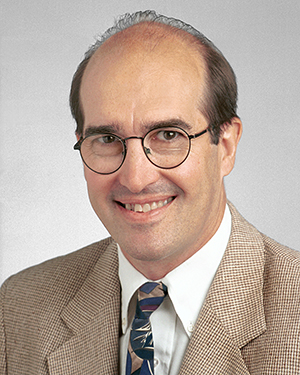Neal Peachey Laboratory
-
Neal Peachey Laboratory
- Principal Investigator
- Research
- Our Team
- Publications
- Careers
Research
Biography
Education & Professional Highlights
Research
Laboratory Projects:
X-linked Retinoschisis. X-linked retinoschisis (XLRS) is a prevalent early onset retinal disorder affecting primarily males. XLRS is caused by mutations in the gene Retinoschisin (RS1). We have been working with three mouse models that carry disease-causing mutations in Rs1. These mice develop an early onset and severe phenotype that varies across the different genetic models. Current studies focus on the very early stages of the disease, using an array of electrophysiological and imaging modalities. This work involves collaborations with investigators at the Burke Medical Research Institute and the University of Illinois at Chicago Eye and Ear Infirmary and is supported by the NIH.
Genetics of Age-Related Macular Degeneration. Age-related macular degeneration (AMD) impacts central vision with a prevalence that increases with age. Prior genetic studies have focused on European populations. Recognizing that the prevalence and presentation of AMD varies across different ethnic populations we are working with the VA Million Veteran Program to determine whether the genetic underpinnings of AMD may differ across different ethnic groups. In veterans of European descent, we have replicated the major genetic risk factors noted in earlier work, and have also identified additional AMD risk alleles. In Veterans of African descent, however, we do not see major contributions from the most prominent AMD risk alleles previously identified in European populations. Current studies are designed to understand these differences and also to expand our analysis to additional eye diseases. This work involves collaboration with investigators at Case Western Reserve University, Buffalo VA Medical Center, and Providence VA Medical Center, and supported by the intramural research program of the United States Department of Veterans Affairs.
Our Team
Selected Publications
View publications for Neal Peachey, PhD
(Disclaimer: This search is powered by PubMed, a service of the U.S. National Library of Medicine. PubMed is a third-party website with no affiliation with Cleveland Clinic.)
Sharma S, Ball SL & Peachey NS (2005) Pharmacological studies of the mouse cone electroretinogram. Visual Neuroscience 22:631-636. Marmorstein LY, Wu J, Yocom J, McLaughlin P, Gregg RG, Strauss O, Peachey NS & Marmorstein AD (2006) Generation of the light peak of the electroretinogram requires voltage gated calcium channels and is antagonized by bestrophin. Journal of General Physiology 127:577-589. Wu J, Marmorstein AD, Striessnig J & Peachey NS (2007) Voltage-dependent calcium channel CaV1.3 subunits regulate the light peak of the electroretinogram. Journal of Neurophysiology 97:3731-3735.
Careers
Training at Lerner Research Institute
Our education and training programs offer hands-on experience at one of the nationʼs top hospitals. Travel, publish in high impact journals and collaborate with investigators to solve real-world biomedical research questions.
Learn More